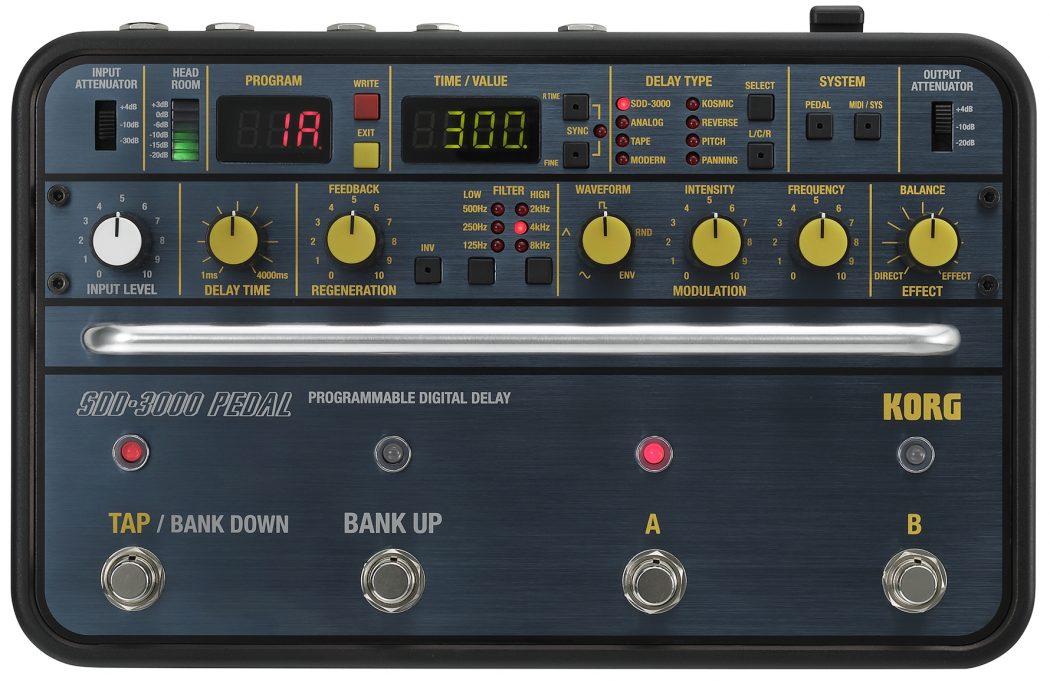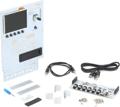
The original Korg SDD-3000 rackmount digital delay was produced beginning in 1982. It was swiftly adopted by many studios and musicians as their go-to delay unit. Eventually it was discontinued, and vintage units have become sought-after treasures. Now, Korg is bringing the SDD-3000 back to life with the SDD-3000 Delay Pedal! The new version combines the sound of the original with the power of a modern delay — the famous preamp circuit preserves all the facets of the slightly compressed, slightly saturated original’s tone.
The SDD-3000 Delay Pedal was created in collaboration with the Edge’s long-time guitar tech, Dallas Schoo — a man who certainly knows the tone and legacy of the SDD-3000 intimately (the Edge is said to own 15 or more vintage units).
The SDD-3000 Delay Pedal features:
- Eight distinct delay types (SSD-3000, Analog, Tape, Modern, Kosmic, Reverse, Pitch and Panning), with delay times ranging from 1 to 4,000 milliseconds.
- 80 programmable preset options
- Stereo in/out
- MIDI operation
- Interactive controls that include tap-tempo, a modulation waveform selector, and selectable filters for delay repeats
- input and output attenuators
- built-in filters
- expression pedal compatibility
- headroom indicator.
Korg says to look for the SDD-3000 Delay Pedal to be available in late July, 2014.













